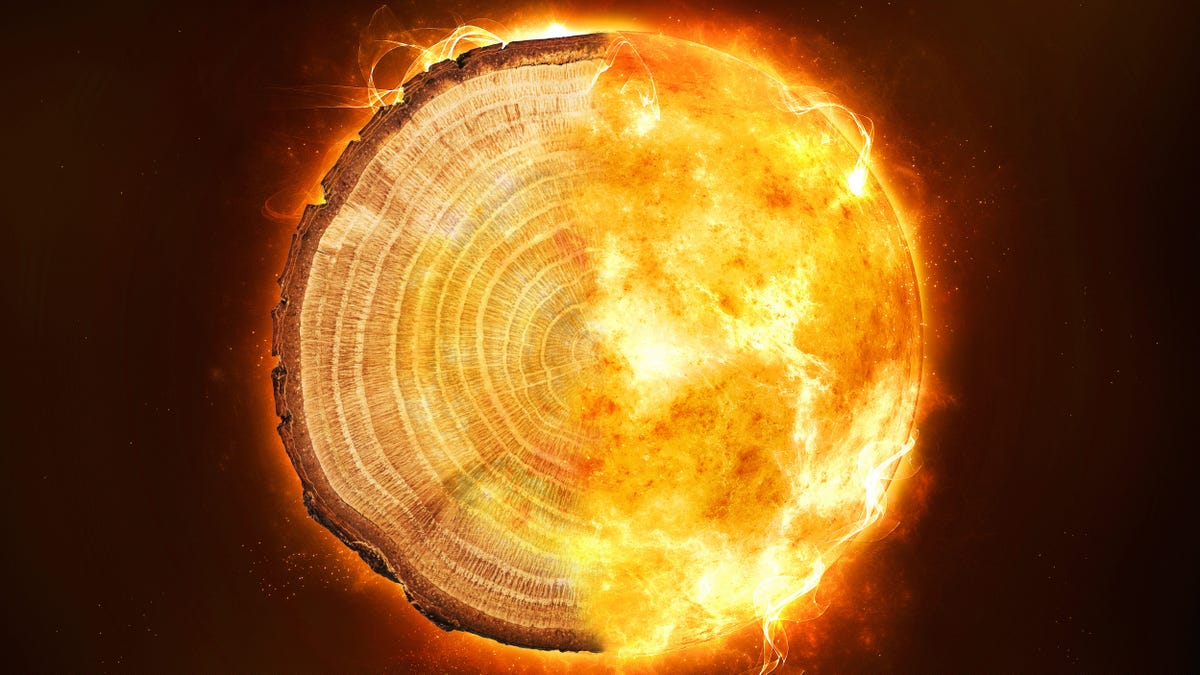Tree Rings Unlock Evidence of Mysterious Cosmic Radiation 'Storms'
Astronomical data hidden in cedars and pines reflects a handful of potentially devastating events, and suggests we may be overdue for the next one.

A composite image showing a tree ring and flames. Researchers used tree ring data to model the global carbon cycle to challenge the common theory about Miyake events.
The universe is billions of years old, but telescopes and the modern study of the cosmos have only been around for a few centuries. So scientists turn to unlikely sources, like tree rings, for data on cosmic events that predate Galileo.
Over the years, tree ring data from around the world has shown evidence of several unexplained and potentially devastating space weather events that delivered a dose of radiation to Earth and many of its inhabitants, including the trees themselves.
"These huge bursts of cosmic radiation, known as Miyake events, have occurred approximately once every thousand years, but what causes them is unclear," explained physicist Benjamin Pope from Australia's University of Queensland, in a statement. "The leading theory is that they are huge solar flares."
Pope led a team of researchers who analyzed tree ring data dating back over a millennia to investigate the link between Miyake events and solar flares. Their study findings appear in Proceedings of the Royal Society A.
In the paper, the team notes that one of the events with the most tree ring data occurred in the year 774 and appears to have been more than 10 times as powerful as the Carrington event of 1859, which was a geomagnetic storm tied to eruptions on the sun. When the blast hit Earth, it reportedly caused telegraph lines to burst into flames and generated global auroras.
"We need to know more, because if one of these happened today, it would destroy technology including satellites, internet cables, long-distance power lines and transformers," Pope says. "The effect on global infrastructure would be unimaginable."
The team used computer models to analyze tree ring data on the six known Miyake events, and the results challenge the idea that huge solar flares are to blame.
"We've shown they're not correlated with sunspot activity, and some actually last one or two years," explains undergraduate math student Qingyuan Zhang, who developed the software that analyzed all available data on tree rings. "Rather than a single instantaneous explosion or flare, what we may be looking at is a kind of astrophysical 'storm' or outburst."
It isn't exactly good news that we could be overdue for a year-long global radiation event.
Pope says the available data shows there's roughly a 1% chance such an event could happen in the next decade.
"But we don't know how to predict it or what harms it may cause," the scientist said. "These odds are quite alarming, and lay the foundation for further research."
This is perhaps the only silver lining to the story -- that much more research is needed to get a better grasp on what exactly happened in the past, and what it means for our future.

